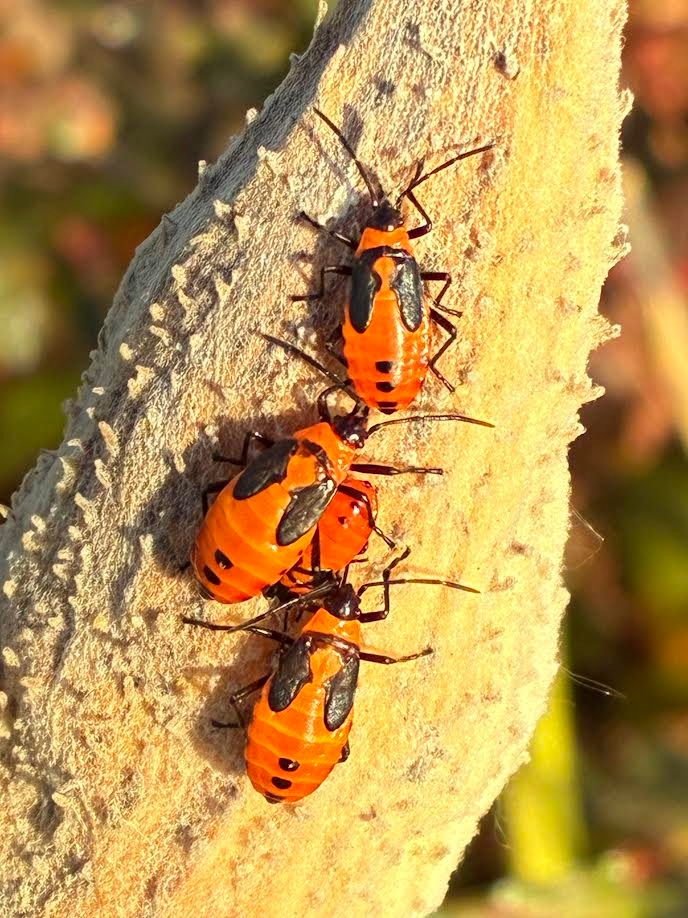Badger Tracks
By Anita Carpenter
A Banner Year for Large Milkweed Bugs
If you were checking for monarch butterfly caterpillars in mid- to late summer, you may have noticed clusters of small, bright orange insects on the developing milkweed pods. A closer look reveals these insects are the nymphs of the next generation of large milkweed bugs.
Taxonomically, large milkweed bugs, Oncopeltus fasciatus, are in the insect order Hemiptera. All hemipterans are collectively known as true bugs. Hemi means half and ptera means wing which refers to the characteristic appearance of the wings of the true bugs. The upper half of the wing is thick and leathery whereas the bottom half is membranous. Hemipterans often have "bug" as part of their common name, but "bug" is a separate word. Some insects have "bug" included within their common name, such as ladybug, but ladybugs are not hemipterans or true bugs. Ladybugs are beetles.
Large milkweed bugs are further classified in the insect family Lygaedae, or seed bugs, whose members feed on seeds.
The 3/4- to 1-inch-long adult large milkweed bugs are easy to identify in their orange and black colors. Look for the broad, black horizontal band across the wing's orange middle. Black also highlights the top and bottom of the wings. Their black and orange coloration warns predators that they are poisonous to eat because these bugs feed on milkweed and ingest the poisonous toxin.
Large milkweed bug nymphs.
Large milkweed bug adult.
Large milkweed bugs appear in the landscape when milkweed pods are developing. While mating, the pair is "attached" tail to tail. Then females lay clusters of 25 to 50 yellow eggs under milkweed leaves or on pods or among a small group of pods. Astonishingly, one female could lay 2000 eggs during her one-month adult life.Eggs hatch in 3 to 6 days. Nymphs appear to feed on the milkweed pods but take a closer look. A nymph actually inserts its beak through the pod into a developing seed inside. It then pumps saliva into the seed to soften the tissue and then sucks out the liquid.
Nymphs require 30 to 40 days to molt 5 times. Looking at these clusters, one can observe several different growth stages called instars. After the fifth molt, an adult emerges with fully developed wings and reproductive organs.
One of the most intriguing and surprising behaviors is that these insects migrate. They cannot survive our cold weather. I've looked at lots of large milkweed bugs and I've never seen one fly, let alone migrate.
I don't know the particulars about their migration, but it raises many questions. When do they migrate? Do they fly close to the ground or high up and how high up? What is flight speed? Do they fly during the day or at night? Do they rely on favorable winds? It is known that if adults survive winter, they gradually repopulate other areas.
So why was this a banner year for large milkweed bugs? Perhaps, because we had so many days of strong, southerly breezes that may have blown or carried these insects farther north than usual. Maybe, because of our warming winters, did more bugs survive winter both here and farther south?
For whatever reasons, it was fun to discover and study so many clusters; then the nymphs and their development, and how they reacted to different weather conditions; and finally the adults that gradually disappeared from their natal pods.
Please plant more milkweeds to encourage these interesting native insects to your yard and then watch what happens.
November-December Newsletter 2025


